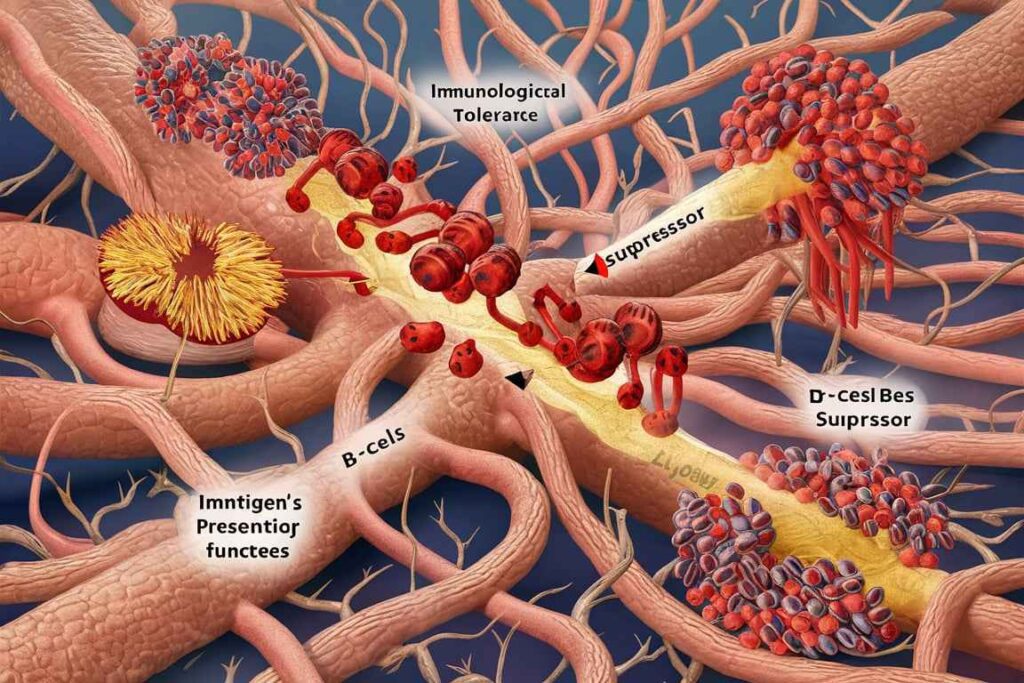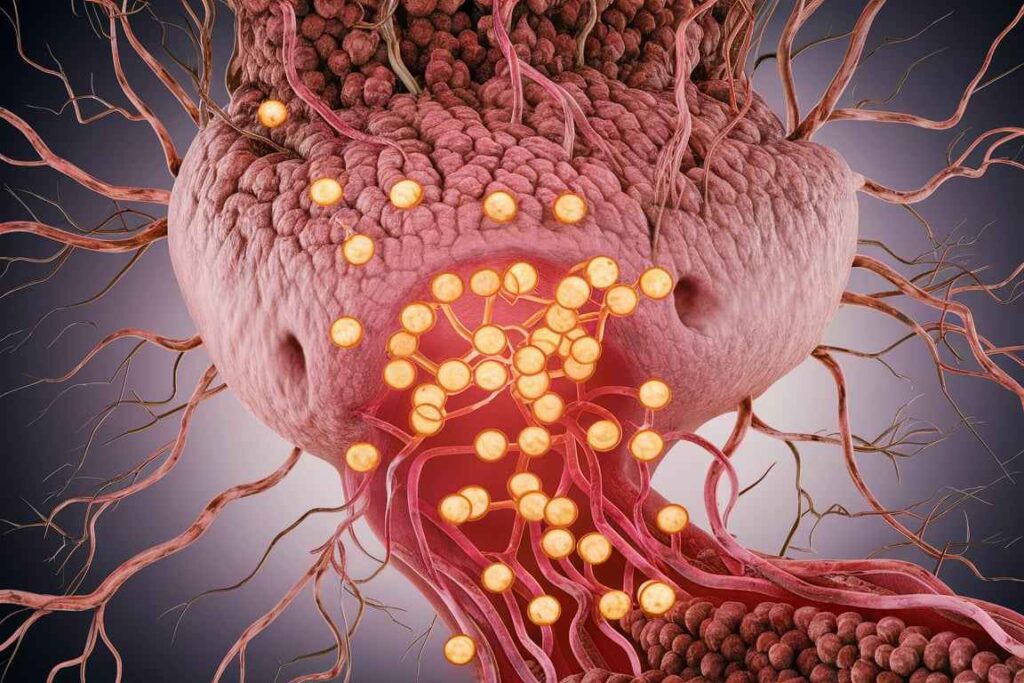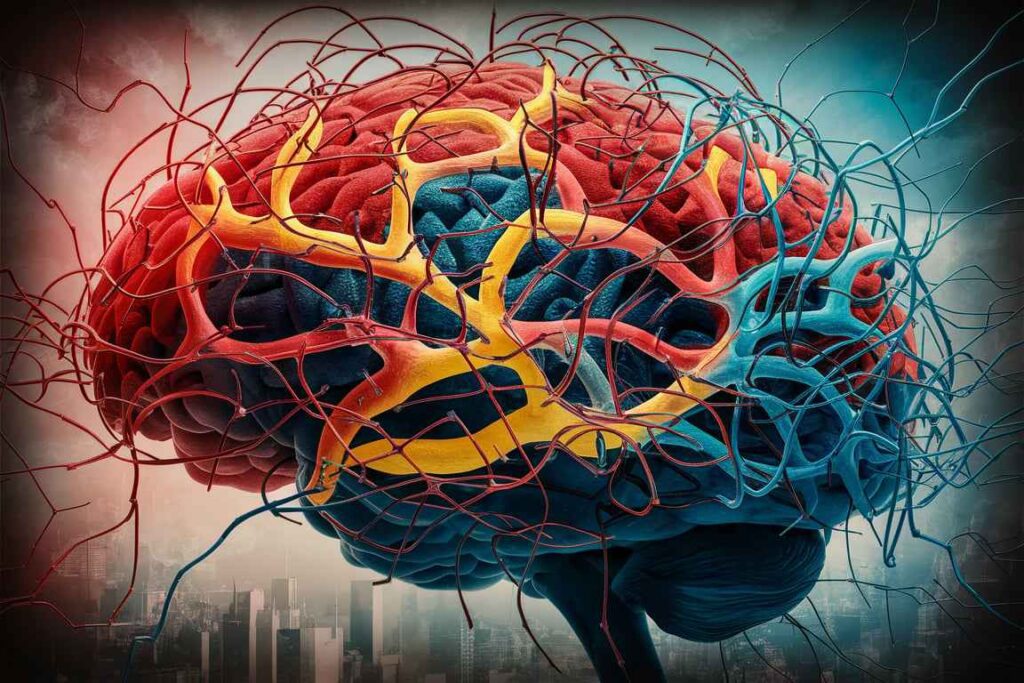Immunological tolerance is a critical aspect of the immune system, enabling it to differentiate between self and non-self antigens to prevent autoimmune diseases. There are two main types of immunological tolerance: central tolerance and peripheral tolerance.
Table of Contents
Immunological Tolerance
Immunological tolerance is the process by which the immune system learns to recognize and avoid attacking the body’s own tissues, hence preventing autoimmune disorders. It is characterized by the immune system’s inability to respond to specific antigens, particularly self-antigens. This tolerance is required to preserve immunological homeostasis and keep the immune system from attacking the body itself. Immunological tolerance is classified into two categories: central tolerance and peripheral tolerance.

Central Tolerance
Central tolerance develops during the early development of T and B cells in the primary lymphoid organs (thymus for T cells and bone marrow for B cells). Central tolerance is a crucial mechanism in the immune system that occurs during the early development of T cells and B cells in the primary lymphoid organs, specifically the thymus and bone marrow. Its primary function is to eliminate or inactivate self-reactive lymphocytes (immune cells) that recognize self-antigens, thereby preventing autoimmune responses.
Thymus (T-cells)

Positive selection occurs when T cells express T-cell receptors (TCRs) capable of detecting self-major histocompatibility complex (MHC) molecules and receive survival signals. This allows T cells to connect with MHC molecules, which is crucial for their participation in immunological responses.
Negative Selection: T cells that attach too strongly to self-antigens presented by MHC molecules on thymic antigen-presenting cells are killed. This mechanism eliminates possibly autoreactive T cells that may induce autoimmunity.
Bone Marrow (B Cells):
Negative Selection: Immature B cells that strongly bind to self-antigens undergo receptor editing (altering their B-cell receptor, BCR) or apoptosis. This reduces the likelihood of autoreactive B cells entering the peripheral circulation.
Peripheral Tolerance

Peripheral tolerance mechanisms target mature lymphocytes that have exited the primary lymphoid organs and are now circulating in peripheral tissues. This is critical for managing possibly autoreactive cells that have slipped central tolerance.
Anergy:
Anergy is a state of functional unresponsiveness. T and B lymphocytes that detect self-antigens but lack appropriate co-stimulatory signals (required for complete activation) become anergic. These cells are alive but do not respond to antigenic stimulation.
Regulatory T Cells (Treg):
Tolerance maintenance relies heavily on regulatory T cells (Tregs). They decrease immunological responses by secreting inhibitory cytokines (e.g., IL-10 and TGF-β), killing autoreactive cells, or altering antigen-presenting cell function. Tregs are critical for preventing autoimmunity and maintaining immunological balance.
Activation Induced Cell Death (AICD):
Repeated stimulation of T cells can cause activation-induced cell death. This method assures the elimination of chronically activated T cells, including autoreactive T cells.
Immune privilege:
Certain bodily areas, such as the eyes, brain, and testes, are considered immune-privileged. These sites regulate immune responses in order to protect important structures from inflammatory damage. Physical barriers, anti-inflammatory factor expression, and local immunosuppressive cytokine synthesis are some of the mechanisms involved.
Clonal Ignorance:
Some potentially autoreactive cells may simply reject specific self-antigens because they are present in low concentrations, are sequestered in tissues not routinely inspected by the immune system, or do not receive necessary co-stimulatory signals.
Frequently Asked Question
What is Immunological tolerance ?
Immunological tolerance is the process by which the immune system learns to recognize and avoid attacking the body’s own tissues, hence preventing autoimmune disorders. It is characterized by the immune system’s inability to respond to specific antigens, particularly self-antigens.
Define Central Tolerance.
Central tolerance develops during the early development of T and B cells in the primary lymphoid organs (thymus for T cells and bone marrow for B cells).
Related Article

